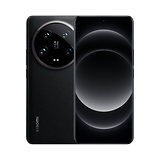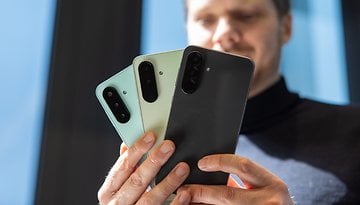Xiaomi 14 vs Xiaomi 14 Ultra: Xiaomi's Premium Smartphones Compared
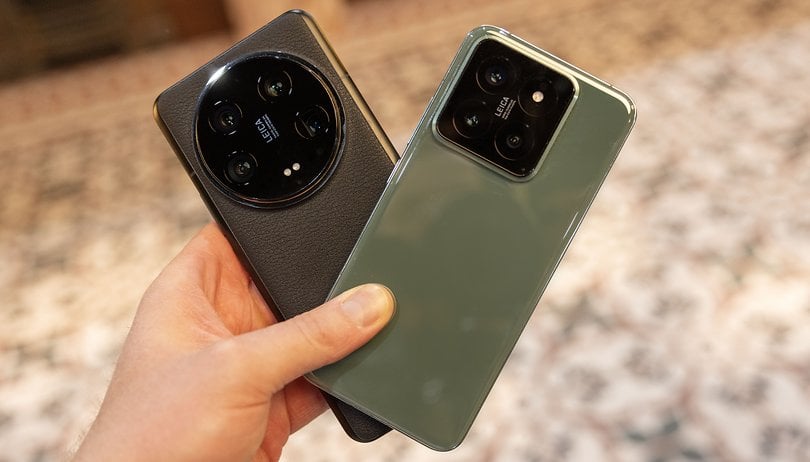

Now that we already know about the Chinese versions of the Xiaomi 14 series, the devices have also been made official in Europe at MWC in Barcelona. With the Xiaomi 14 Ultra at the top of the food chain, the Chinese manufacturer wants to shake up the premium smartphone market. In this article, we introduce all three models, compare the Xiaomi smartphones with each other, and list both similarities and differences in terms of hardware, functions, and price.
You can obtain an initial overview in the following table. Please bear in mind that we have listed all three models, i.e. the base Xiaomi 14 model, the Xiaomi 14 Pro, and the Xiaomi 14 Ultra. This is worth mentioning because the Pro model is not available outside of China.
For the sake of completeness, we will list the device in the table, but focus on the other two models and configurations offered in Europe. As usual, the Xiaomi flagships can only be bought in North America through third-party marketplace sellers.
Xiaomi 14 and Xiaomi 14 Ultra: Technical specifications compared
Table of Contents:
- Xiaomi 14 vs. Xiaomi 14 Ultra: Display and design
- Xiaomi 14 vs. Xiaomi 14 Ultra: SoC and performance
- Xiaomi 14 vs. Xiaomi 14 Ultra: Software
- Xiaomi 14 vs. Xiaomi 14 Ultra: Camera
- Xiaomi 14 vs. Xiaomi 14 Ultra: Battery and fast charging
- Xiaomi 14 vs. Xiaomi 14 Ultra: Price and availability
- Xiaomi 14 vs. Xiaomi 14 Ultra: Conclusion
Xiaomi 14 vs. Xiaomi 14 Ultra: Display and design
One of the most striking differences between the two Xiaomi smartphones is their size: The Xiaomi 14 has a 6.36-inch display, while the screen in the Xiaomi 14 Pro measures 6.73 inches. Both displays offer LTPO tech with a variable refresh rate of 1 to 120 Hz and a pixel density of 460 PPI for the base model with the Ultra sporting 522 PPI. In terms of 3,000 nits peak brightness, however, both devices are on par.
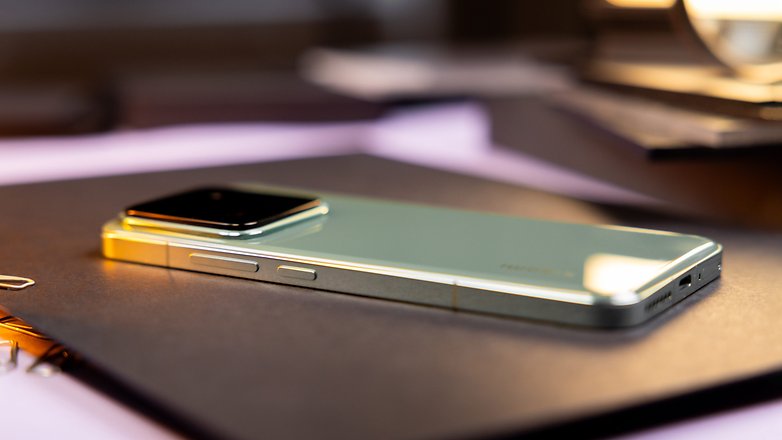
In line with the larger display format, the Ultra model is somewhat bulkier. It is approximately 9 mm longer, 4 mm wider, and exactly 24 g heavier. Both smartphones feature an IP68 rating against dust- and water resistance.
Flipping the handset over reveals another striking distinguishing feature: the three cameras of the Xiaomi 14 are located in a typical rectangular camera island, while the Xiaomi 14 Ultra has a unique Cyclops eye that stares back when you look at it. The legendary Leica lettering is prominently displayed at the center of both camera systems.

While you can buy the Xiaomi 14 in black, green, and white, the Ultra is only available in black or white. There are also differences in the choice of materials: The base model uses the first-generation Gorilla Glass Victus in front and relies on glass at the back. On the Xiaomi 14 Ultra, we find the protective Xiaomi Shield Glass in front and so-called "vegan leather" at the back.
Xiaomi 14 vs. Xiaomi 14 Ultra: SoC and performance
Both Xiaomi smartphones are equipped with the most powerful Qualcomm flagship processor, which is the Qualcomm Snapdragon 8 Gen 3. It is interesting to note the memory configurations differ significantly, depending on the market in which you purchase one of these smartphones. In China at least, the Xiaomi 14 is available in either 8, 12, or 16 GB of RAM, and you can choose between 256, 512, and 1 TB of storage. In Germany, only the 256 GB and 512 GB memory variants are available, each of which is mated to 12 GB RAM.
With the Xiaomi 14 Ultra, the whole story is even more spartan, as you will only receive a single option in Europe: The model with 512 GB of storage and 16 GB of RAM.
In addition to 5G connectivity, both Xiaomi smartphones naturally support the new Wi-Fi 7 standard and Bluetooth 5.4 connectivity. Also on board is a USB port with USB 3.2 Gen 2 that boasts a data transfer rate of 10 GBit/s.
Xiaomi 14 vs. Xiaomi 14 Ultra: Software
Both smartphones are powered by the new HyperOS skin from Xiaomi, which is based on Android 14 and replaces MIUI. Unlike MIUI, however, HyperOS will also run on numerous other device classes. This is part of its "Human X Car X Home" strategy, where Xiaomi wants to create a completely new ecosystem.
Xiaomi 14 and Xiaomi 14 Ultra are also identical twins when it comes to software support. This means that both handsets will receive a very decent figure of five years of security updates and four years of major Android updates. Rumor has it that Xiaomi also wants to pack its software to the rafters with AI features. We will have to find out in the upcoming reviews whether this is just the standard marketing ploy or whether we will really being offered powerful functions.
Xiaomi 14 vs. Xiaomi 14 Ultra: Camera
Xiaomi made it clear that the camera is extremely important to its customers, and not just its cooperation with Leica that has continued since the Xiaomi 13T and 13T Pro (comparison). The Xiaomi 14 and Xiaomi 14 Ultra also feature an impressive setup of three cameras on the Xiaomi 14 and four camera sensors on the Ultra model.
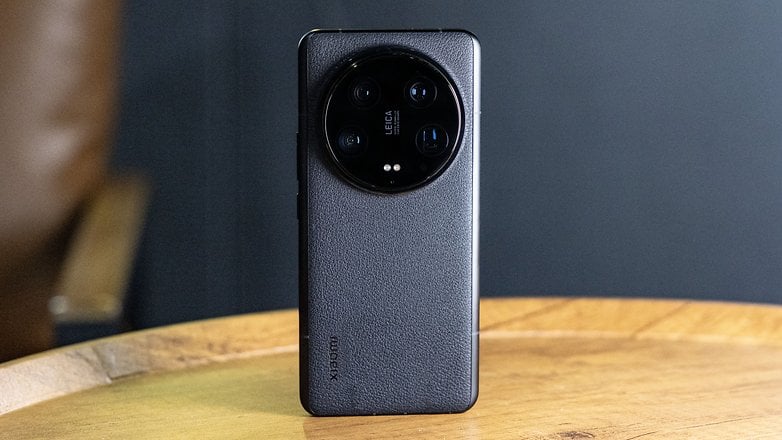
While the most affordable smartphone in the Xiaomi 14 series has the 1.31-inch 50 MP Samsung sensor known as "Light Hunter 900" with a f/1.6 lens, Xiaomi uses the powerful LYT-900 image sensor in the Ultra with a 1-inch sensor size and a continuously adjustable aperture of f/1.63-f/4.0. The focal lengths range from 12 mm to 120 mm.
The "Leica Floating" 3.2x telephoto camera with 50 MP and f/2.0 aperture can be found on both devices. The ultra-wide angle also has a 50 MP sensor, but the Ultra gets a 12 mm focal length and f/1.8 aperture while the "normal" model is equipped with a 14 mm focal length and f/2.2 aperture. Finally, the 50 MP periscope lens on the Xiaomi 14 Ultra is exclusive and rounds off the flagship's quad-camera configuration.
This year, the Ultra also scores points with a photography kit, where Xiaomi is targeting photo enthusiasts. This camera case offers a special grip, an additional battery capacity of 1,500 mAh, and extra features such as a two-stage shutter release, a zoom lever, and a custom dial. Naturally, these special accessories must be purchased separately.
Xiaomi 14 vs. Xiaomi 14 Ultra: Battery and quick charging
Quick charging is Xiaomi's specialty. It is no wonder both smartphones charge extremely fast at 90 W, even though this is nowhere near the fastest speed we are used to from Xiaomi. You can charge the 4,610 mAh battery of the Xiaomi 14 wirelessly at up to 50 W. This is faster than the Galaxy S24 Ultra (review), where its wired charging pales in comparison to what the Xiaomi 14 Ultra offers.
If we need to take another dig at Samsung, we should also mention that the required chargers are included in the packaging.
Xiaomi 14 vs. Xiaomi 14 Ultra: Price and availability
As mentioned, you can now buy the Xiaomi 14 in two memory variants and three colors (Black, White, Jade Green). The price starts from €999.90. The Xiaomi 14 Ultra is only available in two colors (Black and White) with 16 GB RAM and 512 GB of storage space. The Ultra model will also not go on sale until March 19. Bear in mind Xiaomi does not sell its smartphones in the US, hence the pricing in €.
- Xiaomi 14 with 12 GB + 256 GB is available for €999.90 (approx. $1100)
- Xiaomi 14 with 12 GB + 512 GB is available for €1,099.90 (approx. $1200)
- Xiaomi 14 Ultra with 16 GB + 512 GB will be available for €1,499.90 (approx. $1650) from March 19
The Xiaomi 14 Ultra Photography Kit will also be available from March 19 and will cost you €199.90 a pop. There are also bundle offers at Mi.com and other partner retailers with which you can save money. On top of that, Xiaomi will give you a 6-month trial period of 100 GB "Google One" cloud storage and 3 months of YouTube Premium.
Xiaomi 14 vs. Xiaomi 14 Ultra: Conclusion
In contrast to the Redmi Note 13 family, where all five models have exactly the same screen size, you can choose between the large model with 6.73 inches or the small one with 6.36 inches. If this plays a role in your buying criteria, you don't have to think twice about which model to choose. In terms of software, performance, and battery life, however, the differences are marginal. Nobody has to treat themselves to the Ultra for $/€400 more just because the battery charges at 80 W wirelessly instead of 50 W.
What would make a big difference? The answer lies in the camera! Together with Leica, Xiaomi also included a really great triple line-up in the Xiaomi 14, there is no question about it. If you have higher expectations from a smartphone camera, looking for "state of the art" technology, and also want to use practical camera accessories in the form of the Photography Kit, you cannot ignore the Xiaomi 14 Ultra.
In my eyes, the Xiaomi 14 Ultra as a flagship model is simply more than a design statement, against which the Xiaomi 14 looks like a mass-produced Xiaomi, and this does not mean I disrespect the latter.
What do you think of the two Xiaomi 14 series models? Is the basic model adequate for you or do you need the Ultra? Are you mourning the loss of the Xiaomi 14 Pro, which won't make it outside of China (for now)? There's plenty of room to let off steam in the comments section, so let's hear it.

